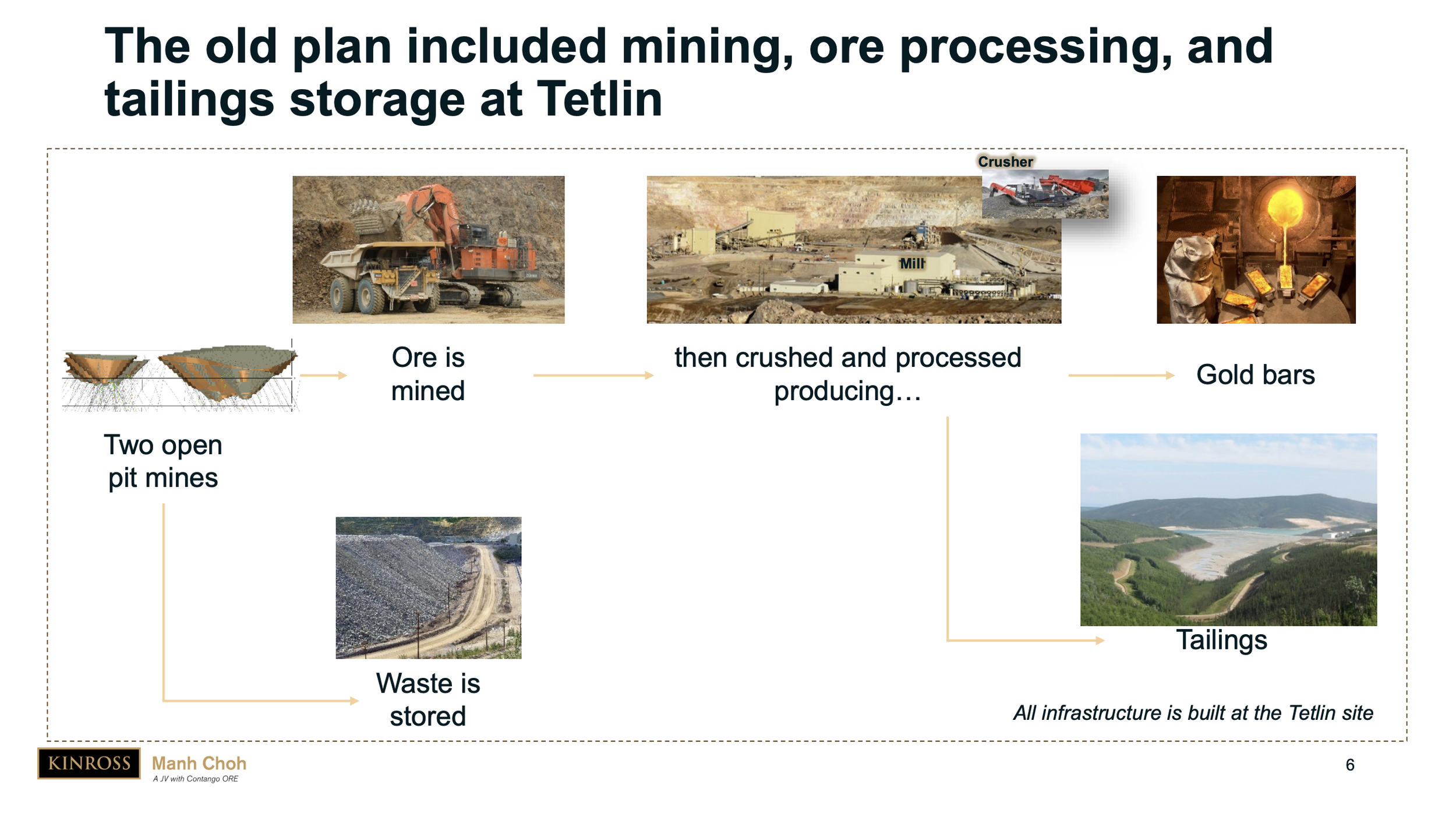Tetlin mine processing plant would be profitable, economical, 2018 study found
Kinross is telling Alaskans that it is not economical to build an ore processing facility at the high-grade gold deposit near Tetlin, so the Canadian company has no choice but to use the highway system to truck ore to the Fort Knox mine for processing.
But there is good reason to dispute the claim.
Why?
Because a 2018 study of the proposed Tetlin project—before Kinross got involved—found that a mine project built at Tetlin would be an economical and profitable venture for all concerned, even with a gold price of $1,250 per ounce. Gold is now about $1,830 an ounce.
Here is the 2018 press release promoting the “robust open pit mining operation with attractive economics” and a 3,500 ton-per-day processing facility at Tetlin.
The “life of mine total cash cost” was estimated at $428 per ounce, with an after-tax payback period of two years.
“The robust economic returns are a result of the deposit’s high grade, low strip ratio, shallow depth of the resource, and access to infrastructure. Establishing an economic project in the Peak area is a great start to realizing the ultimate value of Peak Gold’s assets, which include a large acreage position outside of the Peak area with significant exploration potential,” said Brad Juneau, then the CEO of Contango ORE. He is now the chairman of Contango.
The proposed mine was “one of the most interesting emerging gold projects” in the United States, is how Tony Jensen, then the president of Royal Gold, described the idea five years ago.
Gov. Mike Dunleavy, who said yes to Kinross before asking any questions, is not doing his job. He assumes that whatever Kinross wants is what Kinross should get.
“There’s too much ‘no,’” Dunleavy said. “No trucks on the road from Tetlin to Fort Knox . . .”
“So I need Alaska to say yes to everything.”
Instead of serving as the Kinross Yes Man, Dunleavy should be asking if—given the potential for future expansion and the high-grade profitable deposits at Tetlin and nearby—wouldn’t it be in the state’s best interest to promote on-site processing, reducing the toll on the highways, improving safety for all and creating economic opportunity for that region?
Looked at another way, saying yes to everything allows Kinross to shift costs onto the state and reap the rewards.
Don’t expect the Dunleavy administration to do any real analysis or planning.
In a press release last summer, Kinross said “all-in sustaining costs” of $900 per ounce are expected for the trucking option.
In 2020, Kinross and Contango created the joint venture based on the notion that shipping raw materials to Fort Knox would be cheaper than building a processing facility at the mine site. It would also “decrease execution risk, lower capital expenditures, drive attractive returns, and reduce the project’s environmental footprint and permitting requirements.”
“No special permit is required for trucking ore,” Kinross said in 2020 after announcing the joint venture, adding that the roads are maintained by the state.
In other words, it’s more profitable than building a processing facility at Tetlin, which doesn’t mean that building a processing facility at Tetlin is uneconomic.
The life of the Fort Knox facilities will be lengthened by getting access to ore deposits up to 300 miles from the mine and using the highway system to supply the mine.
"There is an economic radius around Fort Knox given the mill capacity that makes a good chunk of Alaska attractive for potential bolt-on," is how a former Kinross executive put it to the Mining News.
“Bolt-on” means that other mine sites can be developed and the material trucked to Fort Knox.
Your contributions help support independent analysis and political commentary by Alaska reporter and author Dermot Cole. Thank you for reading and for your support. Either click here to use PayPal or send checks to: Dermot Cole, Box 10673, Fairbanks, AK 99710-0673
The Tetlin mine project was originally planned to have a processing plant at the site, an option that would have been robust economics because of the high-grade deposit, promoters said in 2018.
The promoters of the Tetlin project hope that it will continue for many years beyond the five-year estimate that is routinely mentioned.


